Are you curious about ancient civilizations and archaeological finds? Here are the archaeology museums you must see in Bavaria:
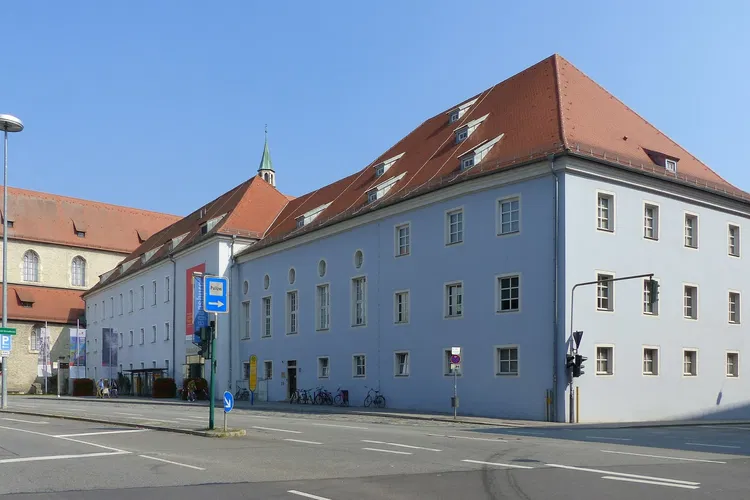
Regensburg Museum of History
RegensburgThe Historisches Museum in Regensburg, Bavaria, offers a comprehensive look into the history, art, and culture of Regensburg and Eastern Bavaria. Spanning from the Stone Age to the present day, the museum provides a unique opportunity to delve into the region's rich past. Visitors can explore a variety of exhibits that showcase the evolution of the area over thousands of years.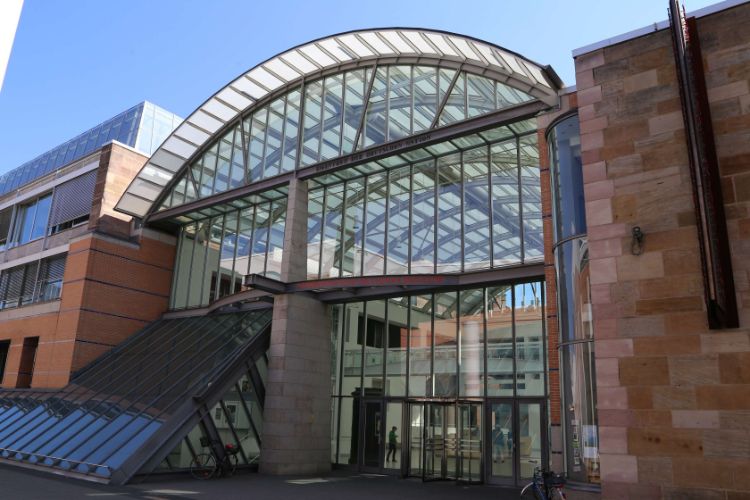
Germanisches Nationalmuseum
NurembergThe Germanisches Nationalmuseum is the largest museum of cultural history in Germany, located in Nuremberg. The museum holds and exhibits a large collection of items related to German culture and art from prehistoric times to the present day. The collection consists of around 1,3 million objects of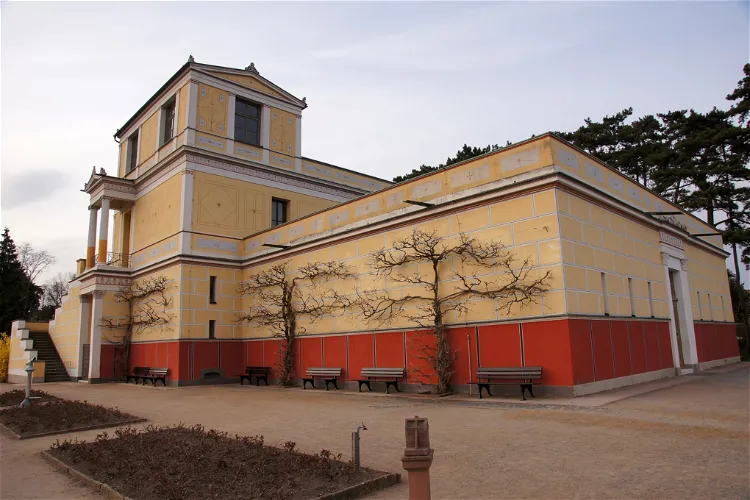
Pompejanum
AschaffenburgThe Pompejanum in Aschaffenburg is a unique attraction as it is a replica of a Roman villa, specifically modeled after the Casa dei Dioscuri in Pompeii. This architectural marvel stands on the high bank of the Main, offering a glimpse into the ancient Roman lifestyle and culture.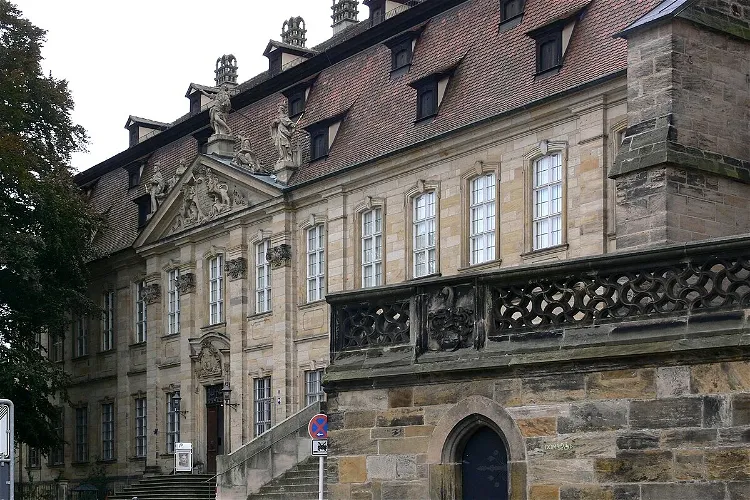
Bamberg Diocesan Museum
BambergThe Bamberg Diocesan Museum, situated in the chapter house adjacent to the cathedral, is home to a vast collection of art treasures. These treasures originate from the old cathedral treasury of Bamberg Cathedral and span the entire archdiocese. The museum offers a unique opportunity to explore the rich history and artistic heritage of the region.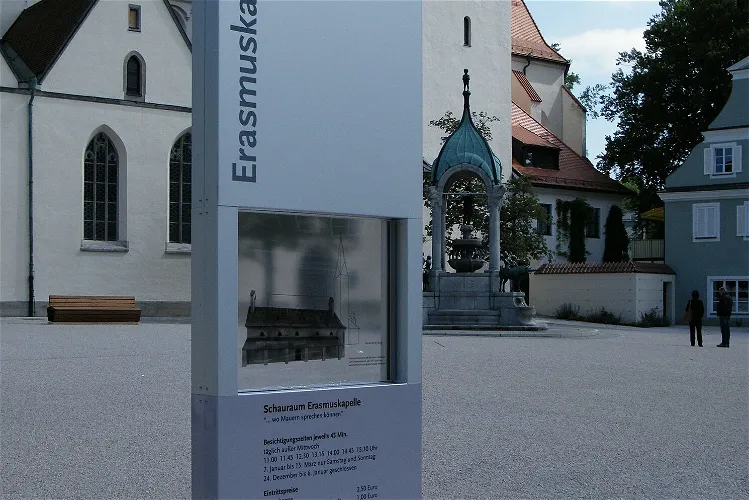
Erasmuskapelle
Kempten (Allgäu)Archaeological investigations conducted between 2003 and 2010 revealed approximately 500 burial sites of a former cemetery. The preserved parts of this archaeological monument were opened to the public in 2010, and it has since been recognized as a tourist attraction.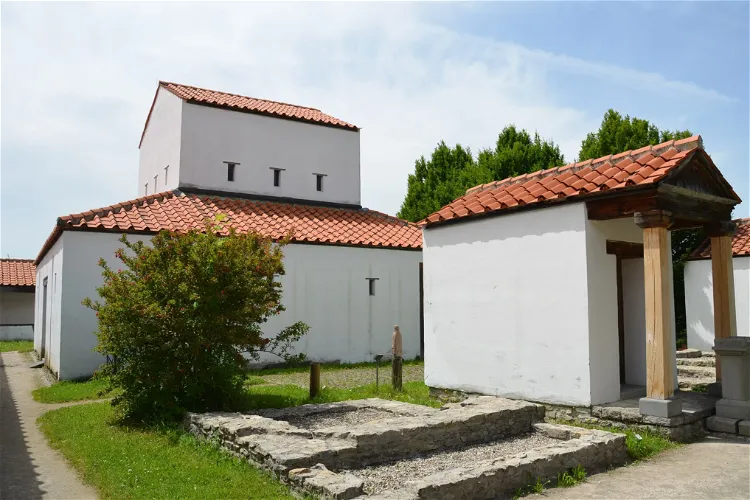
Cambodunum Archaeological Park
Kempten (Allgäu)The Cambodunum Archaeological Park in Kempten (Allgäu) is a significant historical site that offers a unique insight into the Roman-era town of Cambodunum during the time of Emperor Augustus. The park, which is an excavation site and museum, has been open to the public since 1983. It provides a fascinating glimpse into the past, allowing visitors to explore the remnants of a once-thriving Roman settlement.
Mercateum
KönigsbrunnThe Mercateum, located in Königsbrunn in the Augsburg district, is the world's largest globe based on historical cartography. This unique monument is a testament to the historical trade relations between Swabia, Franconia, and India. It was officially opened to the public on May 30, 2008, and has since been a significant attraction for those interested in history and cartography.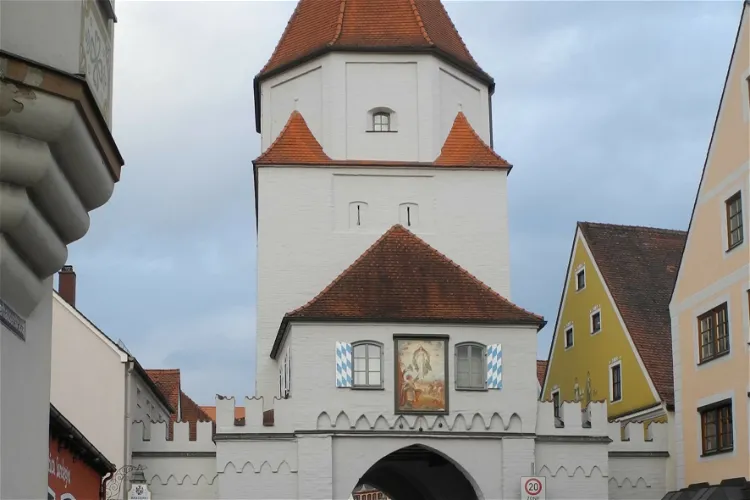
Wittelsbacher Museum
AichachThe Wittelsbacher Museum, previously known as the Wittelsbachermuseum Aichach, is an archaeological museum situated in the Swabian town of Aichach on the Paar in the district of Aichach-Friedberg. This museum is a significant destination for those interested in archaeology and the history of the region.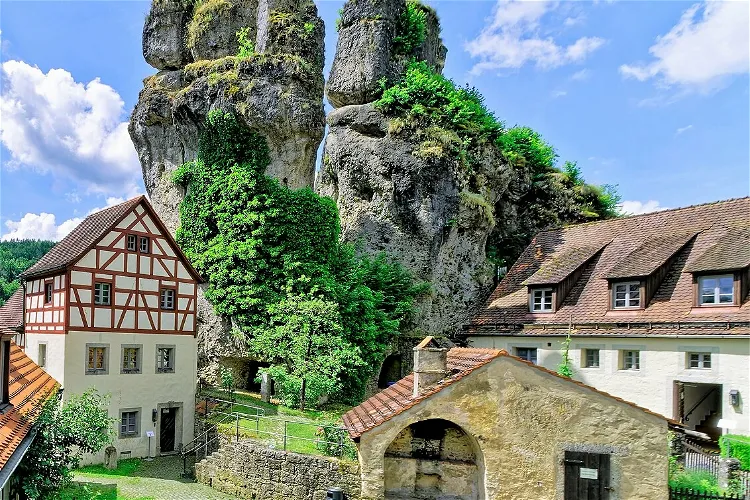
Fränkische-Schweiz-Museum
PottensteinThe Fränkische Schweiz-Museum (FSMT) in Tüchersfeld is a regional museum that offers a comprehensive overview of the Franconian Switzerland. The museum is spread over 43 rooms and covers approximately 800 m² of exhibition space. It provides a deep insight into the region's history, culture, and natural beauty.
Kelten- & Römermuseum Manching
ManchingThe Kelten-Römer-Museum, located in Manching, approximately ten kilometers southeast of Ingolstadt, is a branch of the Archaeological State Collection Munich. The museum was inaugurated on June 2, 2006, and offers a unique insight into the history and culture of the Celts and Romans.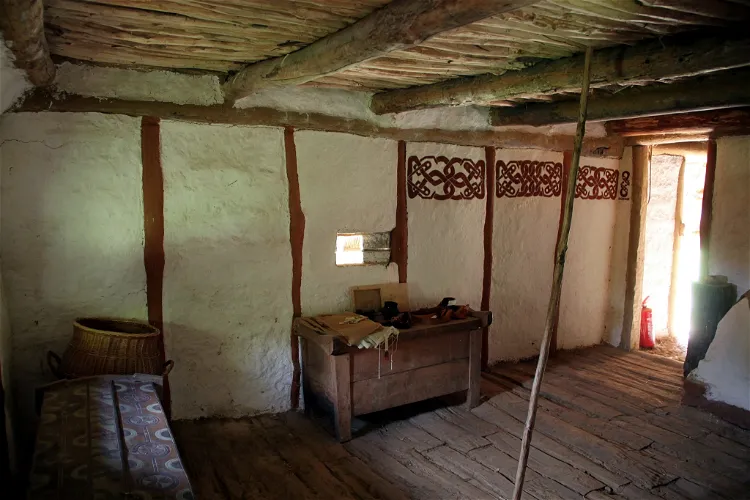
Bajuwarenhof Kirchheim - Freilichtmuseum bei München
HeimstettenThe Bajuwarenhof Kirchheim is an archaeological open-air museum situated in the municipality of Kirchheim near Munich. This museum offers a unique opportunity to explore the rural life and work environment of the 6th and 7th centuries AD. It was established in the winter of 2003 and was Kirchheim's official contribution to the 2005 Federal Horticultural Show.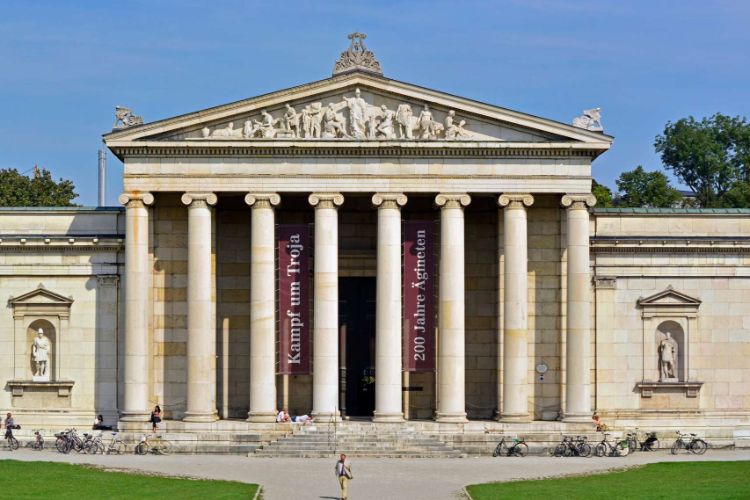
Glyptothek
MunichThe Glyptothek Munich is a museum for ancient Greek and Roman statues, which is located in the Kunstareal Munich of the Bavarian capital Munich. The Glyptothek was commissioned by the Bavarian King Ludwig I to a design by the neoclassical architect Leo von Klenze and opened to the public in 1830. Th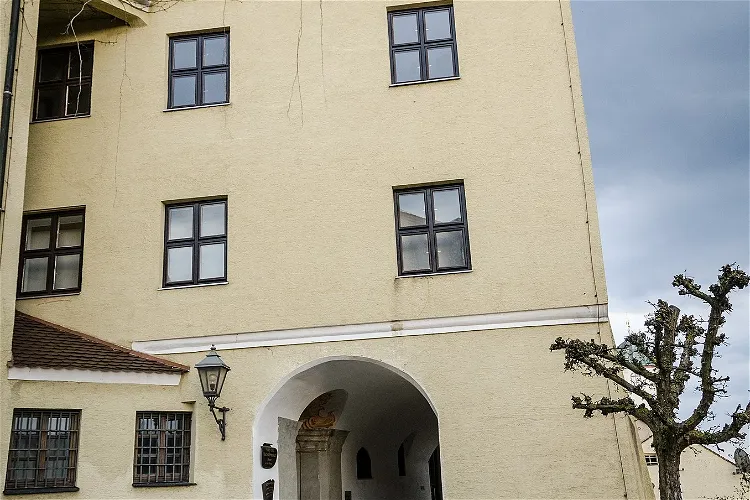
Stadt- und Hochstiftmuseum
Dillingen a.d.DonauThe Stadt- und Hochstiftmuseum, located in Dillingen an der Donau in Bavaria, is a museum that focuses on archaeology, cultural history, and city history. It provides a comprehensive overview of the region's past, making it a valuable destination for those interested in learning more about the area's rich history.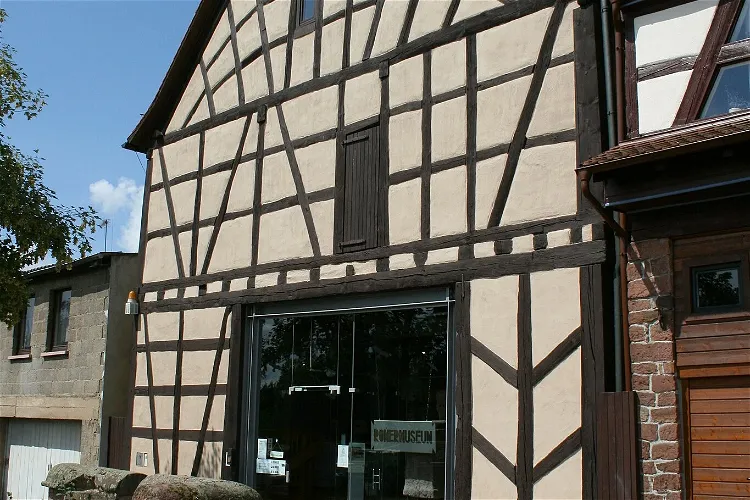
Römermuseum Obernburg
Obernburg am MainThe Römermuseum Obernburg, situated in the city of Obernburg am Main, is a museum that primarily showcases Roman artifacts. These artifacts are mainly from the Obernburg fort and its associated settlement. This gives visitors a unique opportunity to delve into the rich history of the Roman era in this region.
Historical Museum Bamberg
BambergThe Historical Museum Bamberg is situated in the Renaissance buildings of the Old Court, which is in close proximity to the Kaiserdom. This location adds to the historical charm of the museum and provides a unique setting for the exhibits. Visitors can enjoy the architectural beauty of the Renaissance buildings while exploring the museum's collections.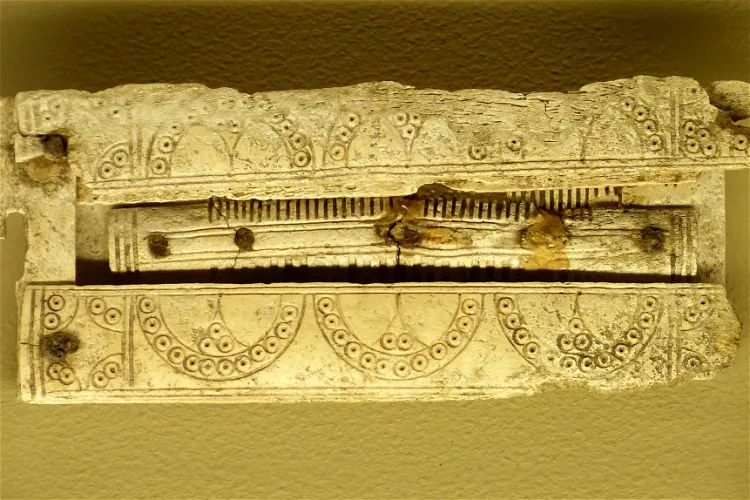
Archaeological Museum Kelheim
KelheimThe Archaeological Museum of the city of Kelheim is a dedicated institution that focuses on the archaeology and history of the Lower Bavarian city of Kelheim. It provides a comprehensive overview of the region's past, making it an ideal destination for those interested in history and archaeology.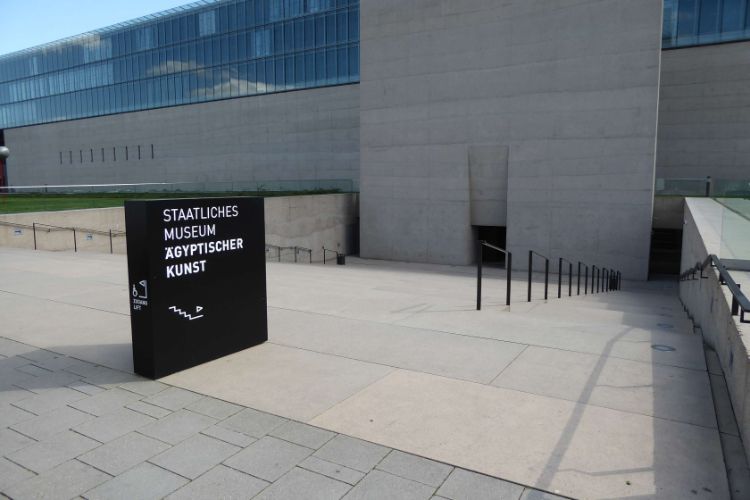
State Collection of Egyptian Art
MunichThe State Collection of Egyptian Art in Munich (Staatliche Sammlung für Ägyptische Kunst) is an archaeological museum in Munich that holds and exhibits the state collection of Ancient Egypt art with exhibitions both on the predynastic as well as the dynastic periods. The State Collection of Egyptian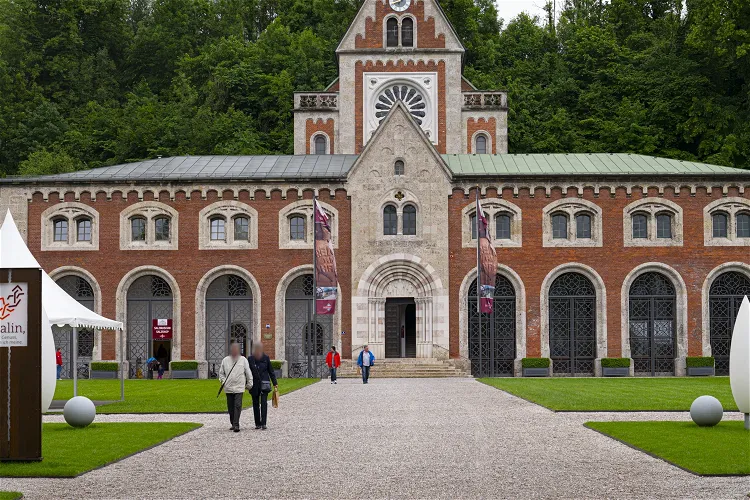
Alte Saline
Bad ReichenhallThe Alte Saline, located in Bad Reichenhall, is a former saltworks that was built according to the designs of Joseph Daniel Ohlmüller and Friedrich von Schenk. This historical industrial monument, which produced Reichenhaller salt from brine from 1844 to 1929, is a testament to the city's rich salt production history.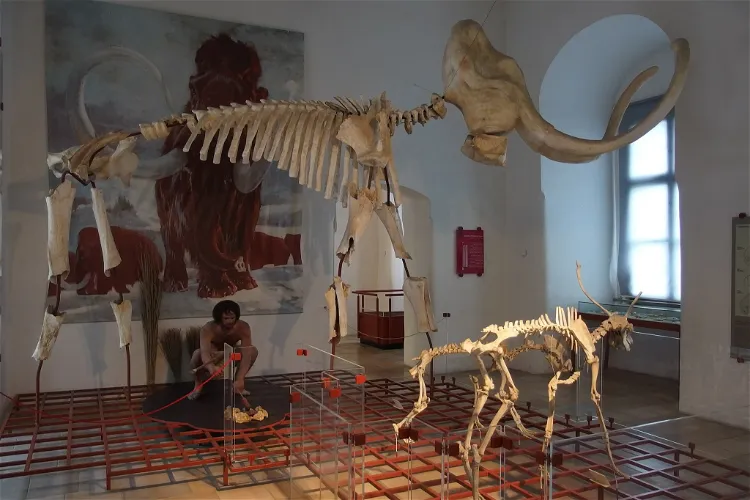
Museum für Ur- und Frühgeschichte
EichstättThe Museum für Ur- und Frühgeschichte is an archaeological museum situated in the Willibaldsburg in Eichstätt, Upper Bavaria. This museum is a significant destination for those interested in archaeology and history, offering a comprehensive view of the region's development from the Stone Age to the Early Middle Ages.
document Neupfarrplatz
RegensburgNeupfarrplatz and the eponymous Neupfarrkirche are located in the heart of Regensburg's old town, just south of the Regensburg Cathedral. This central location makes it an easily accessible and prominent spot for tourists visiting the city. The square and the church have a rich history that dates back to the expulsion of the Jewish population in 1519, which adds a historical depth to the site.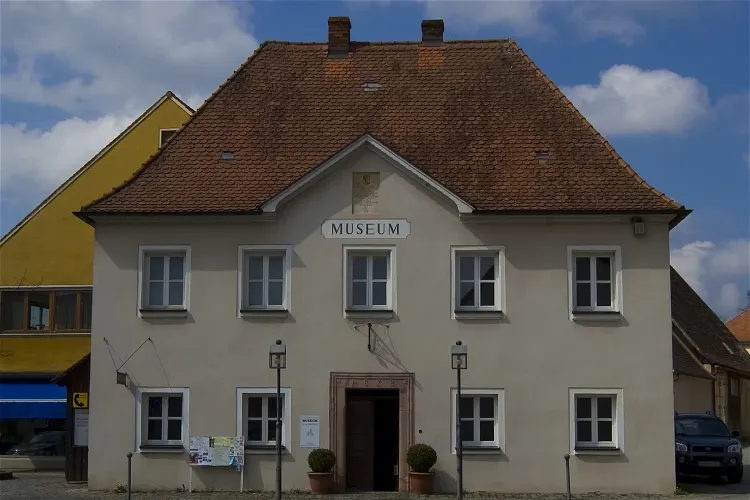
Vor- und frühgeschichtliches Museum Thalmässing
ThalmässingThe Fundreich Thalmässing, previously known as Vor- und frühgeschichtliches Museum Thalmässing, is an archaeological museum situated in the market town of Thalmässing, within the district of Roth. This museum, supported by the district of Roth, was established in 1983 and is housed in a building that was originally built as a grain store in 1828, but was later used as a town hall.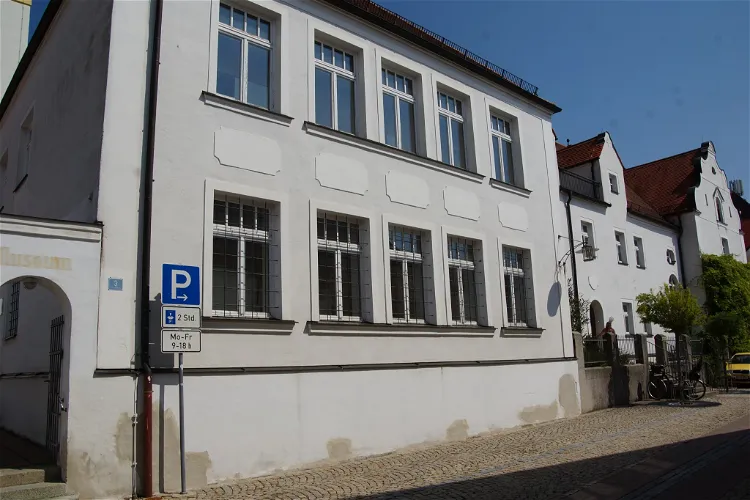
Museum Kösching
KöschingThe Museum Markt Kösching is an archaeological and ethnological museum situated in the Upper Bavarian market town of Kösching, within the Eichstätt district. It offers a unique opportunity to delve into the rich history and culture of the region, from ancient times to the present day.
Sammlung Ludwig
BambergThe Sammlung Ludwig in Bamberg is recognized as one of the most significant private collections in the field of faience and porcelain. This collection, housed in the Altes Rathaus since 1995, is a testament to the passion and dedication of the collector couple Peter and Irene Ludwig. It offers a unique opportunity for visitors to explore a wide range of artifacts from different periods and regions.
Roman Museum Castle Boiotro
PassauThe Roman Museum Castle Boiotro, situated in the Innstadt district of Passau, was inaugurated in 1982. This museum is a significant historical site that offers visitors a glimpse into the past of this region. It is located on the foundations of the late Roman Castle Boiotro, remnants of which can be seen in the museum's outdoor area.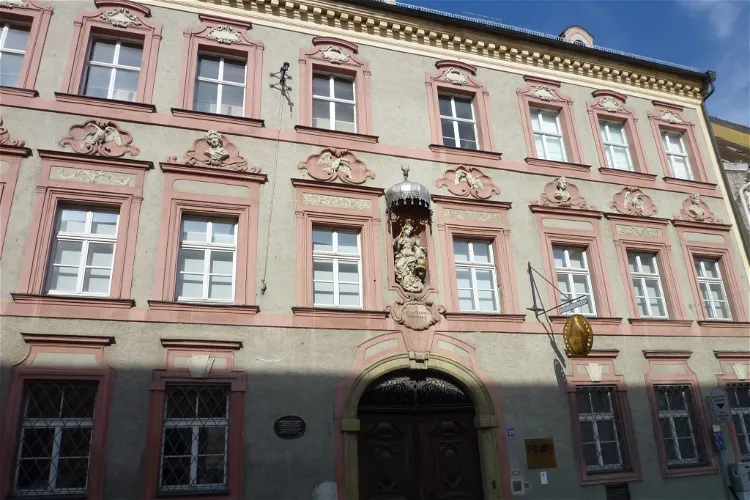
Gäubodenmuseum
StraubingThe Gäubodenmuseum in Straubing is a museum that offers a comprehensive overview of the history of Straubing and the Gäuboden region. It covers various periods from prehistory, the Roman era, the early Bavarians, the Middle Ages, the Counter-Reformation to the end of the Kingdom of Bavaria, and also includes sections on sacred art and popular piety.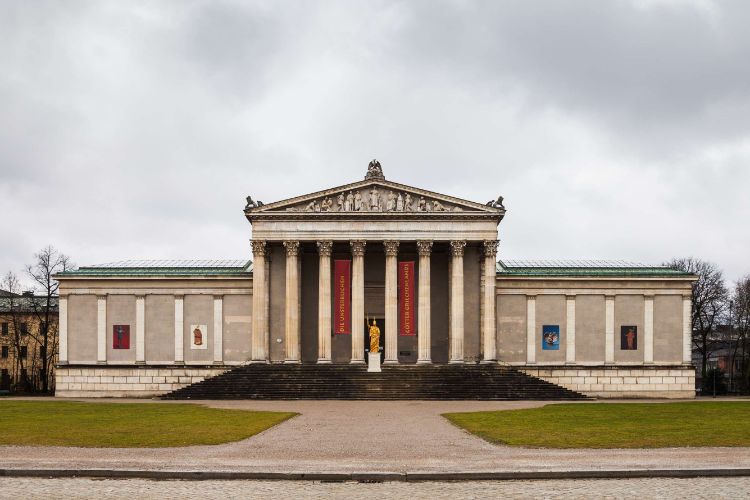
Museum of Antiquities (Antikensammlungen)
MunichThe Staatliche Antikensammlungen (National Collections of Ancient Objects, Museum of Antiquities) is a museum in Munich with antiquities from Greece, Etruria and Rome. The building called Ausstellungsgebäude which houses the museum collections was built at the behest of Ludwig I, inspired by a templ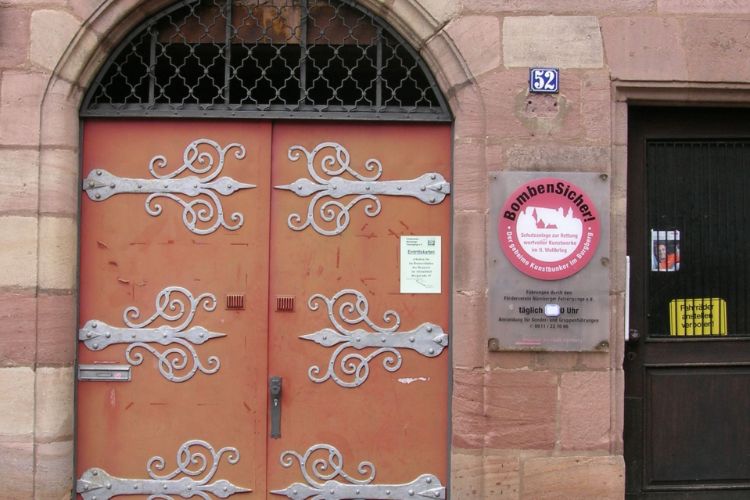
Kunstbunker
NurembergThe Historische Kunstbunker (Historic art bunker) is a tunnel complex under the Nuremberg Castle in Nuremberg. Visitors can participate in discovery tours to take a look at Nuremberg from a completely different side and discover places that have existed for many centuries but are hidden under the st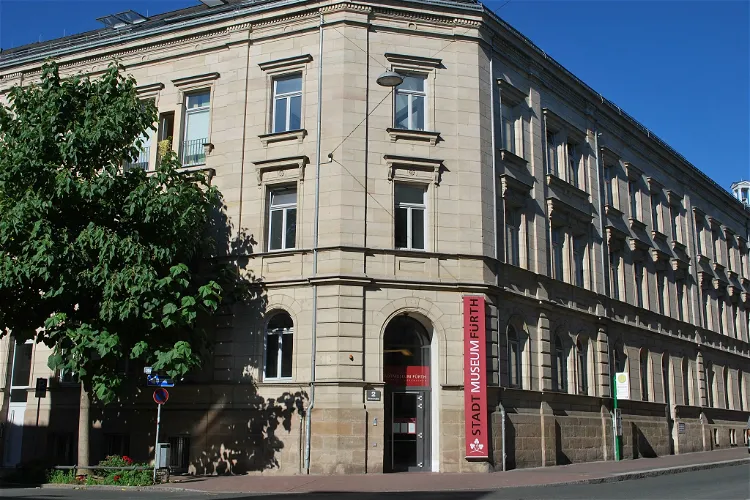
Stadtmuseum Fürth
FürthThe Stadtmuseum Fürth is a museum that presents the city and economic history of the Franconian city of Fürth. It provides a comprehensive overview of the city's development, from its early beginnings to the present day. The museum's collection includes exhibits that span from the Bronze Age to the present day, offering a deep dive into the city's rich history.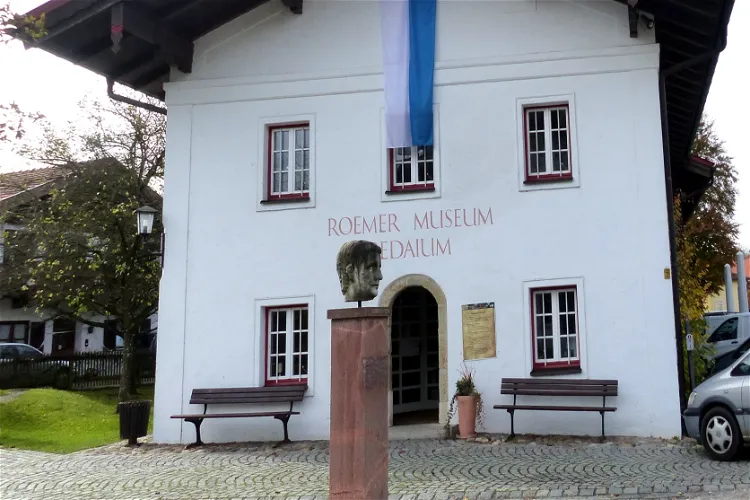
Römermuseum Bedaium Seebruck
Seeon-SeebruckThe Römermuseum Bedaium in Seebruck on the Chiemsee is a municipal museum that houses around 500 exhibits. This museum is managed by the municipality of Seeon-Seebruck, offering visitors a chance to explore a wide range of artifacts.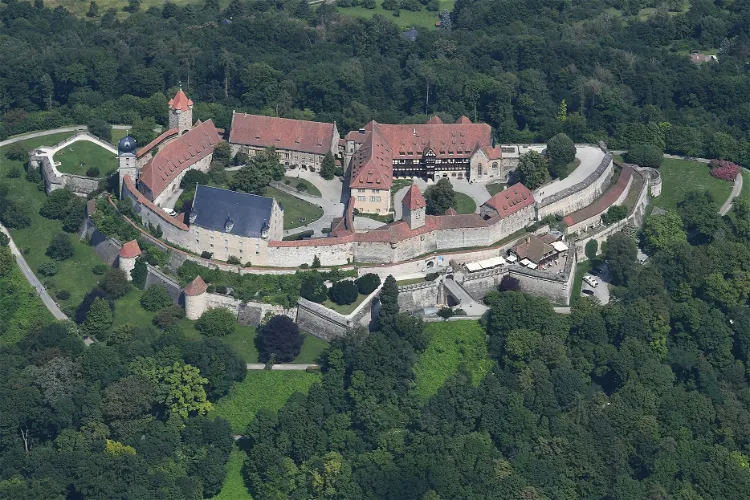
Veste Coburg
CoburgVeste Coburg, often referred to as the 'Franconian Crown', is a significant historical site in Germany. It is one of the largest and best-preserved castles in the country. The castle is strategically located on a hill, providing a panoramic view of the city of Coburg. It is situated on the border of Bavaria and Thuringia, adding to its historical and geographical significance.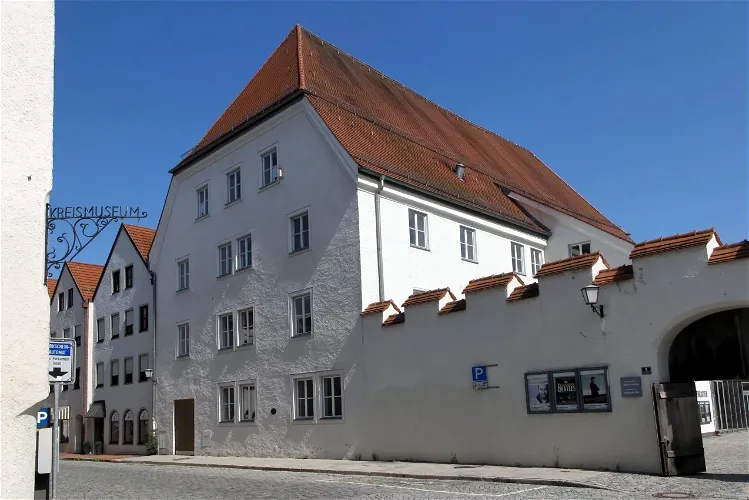
Museum Mühldorf - Museum Mühldorf a. Inn
Mühldorf a. InnSince 2015, the Museum Mühldorf a. Inn has been spread across two locations in the city. The main building, known as the Lodronhaus, is located at Tuchmacherstraße 7. The second part of the museum's permanent exhibition can be found in the Haberkasten. This dual-location setup allows the museum to showcase a wider range of exhibits and cater to a broader spectrum of interests.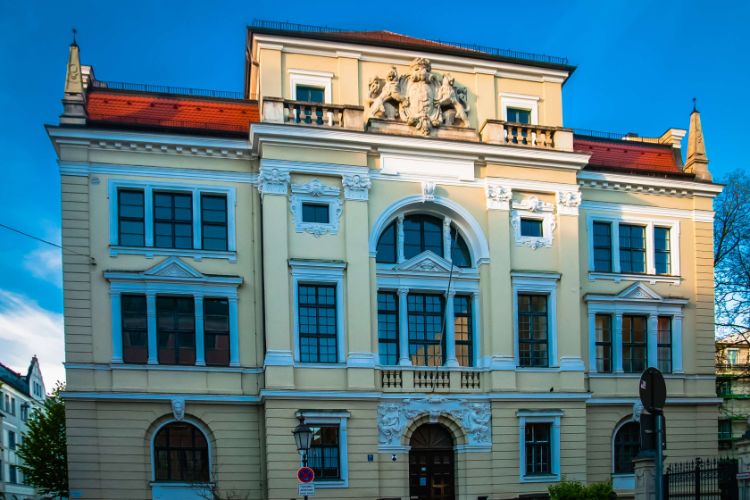
Paleontological Museum Munich
MunichThe Paleontological Museum Munich is a museum in Munich that exhibits objects from the Bayerischen Staatssammlung für Paläontologie und Geologie (Bavarian State Collection for Paleontology and Geology). The building that houses the museum dates from the 20th century when it was planned to be a schoo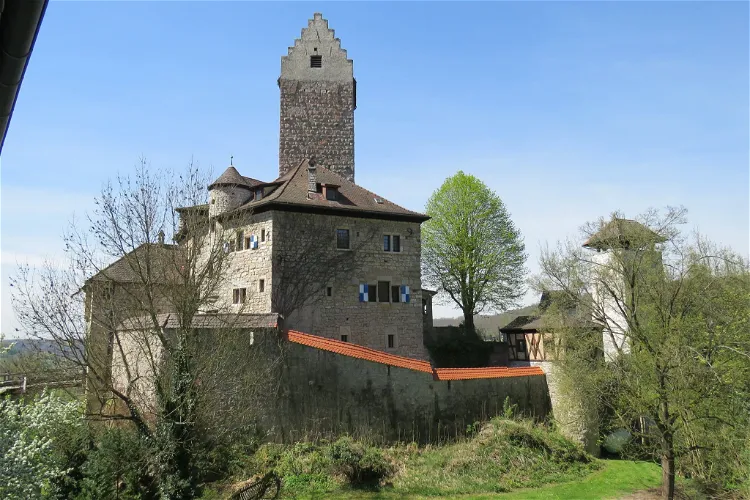
Römer und Bajuwaren Museum
KipfenbergThe Römer und Bajuwaren Museum Burg Kipfenberg is an archaeological, folkloric, and local history museum. It is situated in Kipfenberg, a market town in the Upper Bavarian district of Eichstätt. The museum is housed in a former economic building of Burg Kipfenberg, adding a touch of historical charm to the overall experience.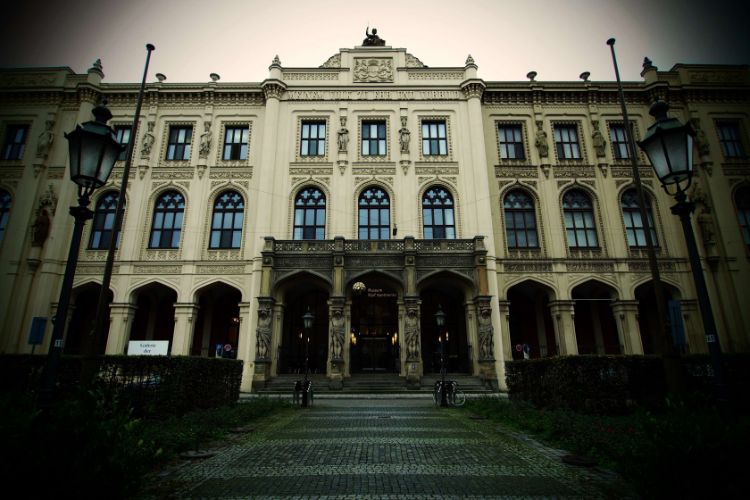
Museum Five Continents
MunichThe Museum Five Continents is a museum in Munich with non-European artworks and objects of cultural value. The collection exhibited in the museum dates back in part to 1782, when the curiosities gathered by the Wittelsbachs were exhibited in the galleries of the Residenz. The current collection cont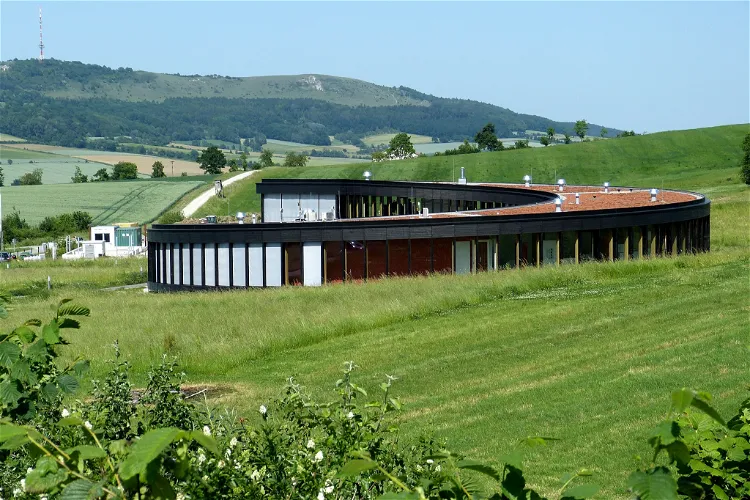
Limeseum Ruffenhofen
IrsingenThe Limeseum is an archaeological museum located in Römerpark Ruffenhofen in the Ansbach district. It was established in 2012 and provides a wealth of information about the Roman era. The museum is designed as a round building that blends into its landscape just below the Hesselberg.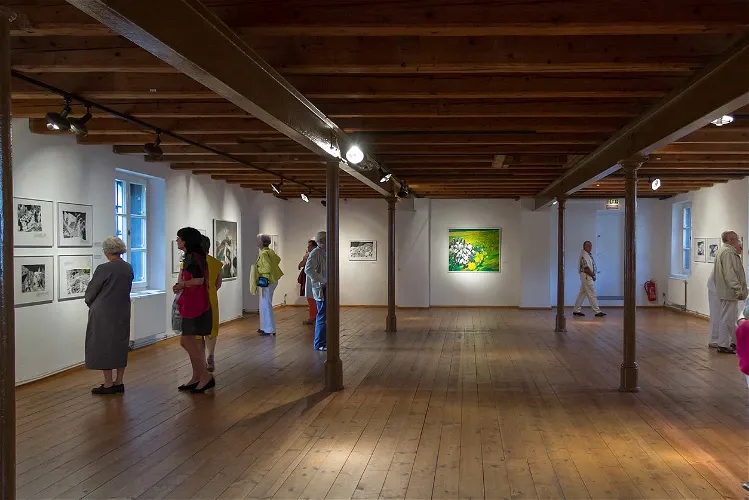
Museum Fürstenfeldbruck
FürstenfeldbruckThe Museum Fürstenfeldbruck, located in the former monastery brewery in the Cistercian monastery Fürstenfeld, is the city's art and cultural history museum. It offers a unique insight into the history and art of the Fürstenfeld monastery and its relationship with the Wittelsbach rulers.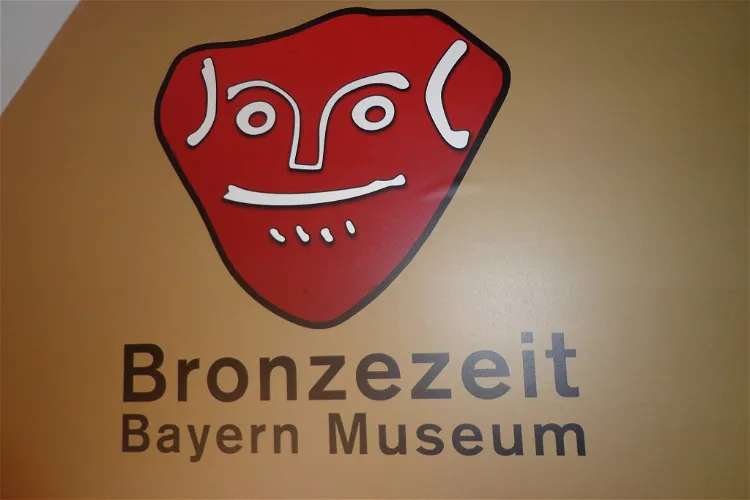
Bronzezeit Bayern Museum
BergThe Bronzezeit Bayern Museum, which opened its doors in 2014, is a fascinating destination for those interested in the Bronze Age. The museum houses a collection of artifacts from Bernstorf and other parts of Bavaria, providing a unique insight into the region's history during this period.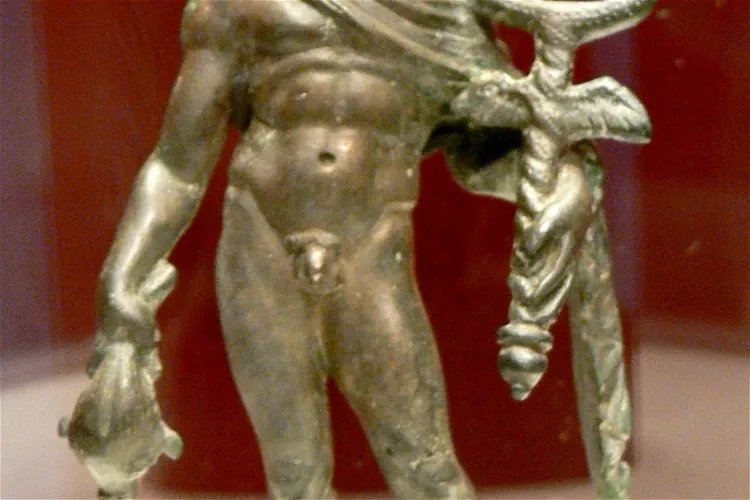
Archäologisches Museum Gunzenhausen
GunzenhausenThe Archaeological Museum, also known as the Museum for Pre- and Early History Gunzenhausen, is situated in the Middle Franconian city of Gunzenhausen, within the district of Weißenburg-Gunzenhausen. This museum offers a unique opportunity to delve into the rich archaeological history of the region.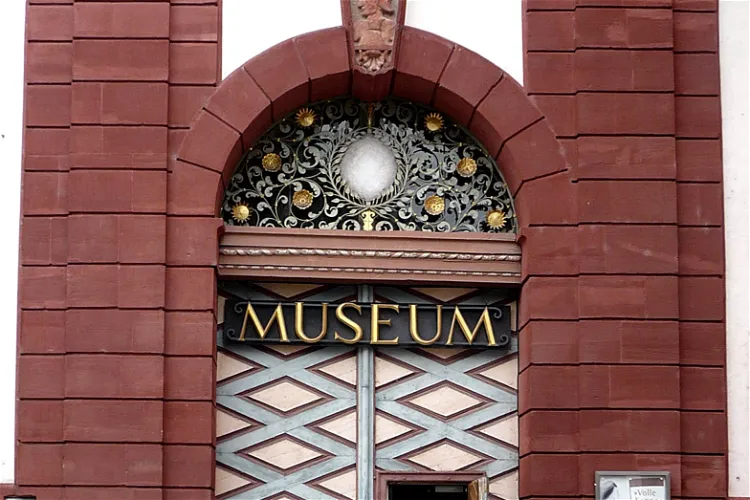
Museum für Franken & Staatliches Museum für Kunst- und Kulturgeschichte
WürzburgThe Museum für Franken, previously known as the Mainfränkisches Museum, is situated within the Marienberg Fortress in Würzburg. It is recognized as one of the largest art collections in Bavaria. The museum houses a vast array of high-value works from Franconian artists, making it a significant international museum in Germany.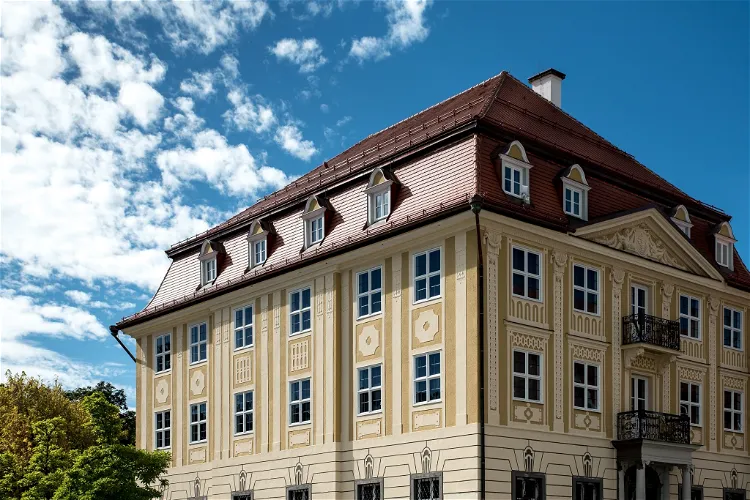
Kunsthalle Kempten
Kempten (Allgäu)The Kempten Museum, situated in the historic Zumsteinhaus, is a relatively new addition to the city's cultural scene, having opened its doors in 2019. The museum is dedicated to the history and culture of Kempten, one of the oldest cities in Germany. It offers a comprehensive overview of the city's past, spanning over 2000 years, from its ancient origins to the present day.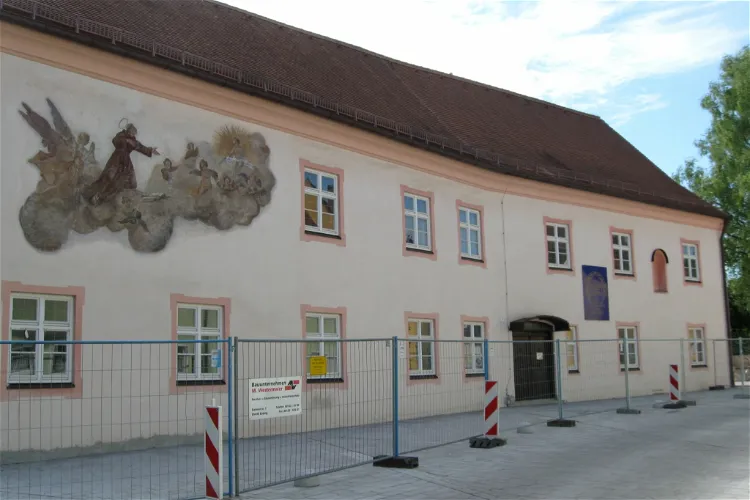
Museum Erding
ErdingThe Museum Erding, located in Erding, is a local history museum that was established in 1856 by Anton Bachmair, a shoemaker. With over 160 years of collection history, it is one of the oldest municipal museums in Bavaria. The museum's collection began with musician uniforms, weapons, and other items.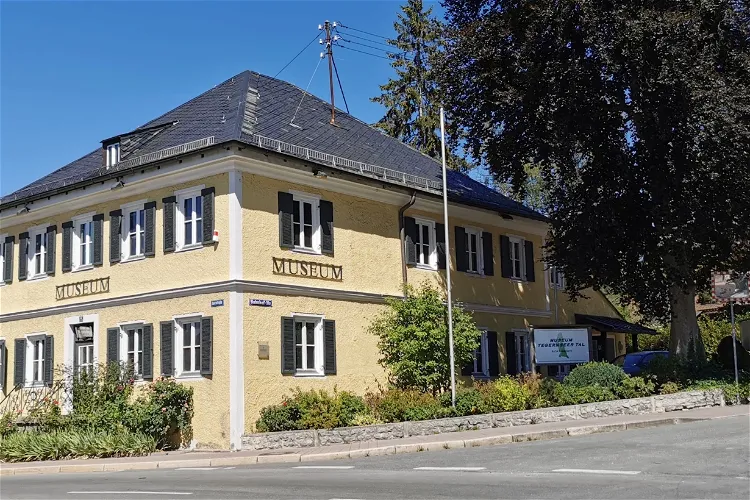
Museum Tegernseer Tal Kultur und Geschichte
TegernseeThe Museum Tegernseer Tal boasts a collection of approximately 850 exhibits, displayed across 17 rooms. These exhibits span a broad timeline, from the 14th century to the present, offering visitors a comprehensive look at the region's history and evolution over the centuries.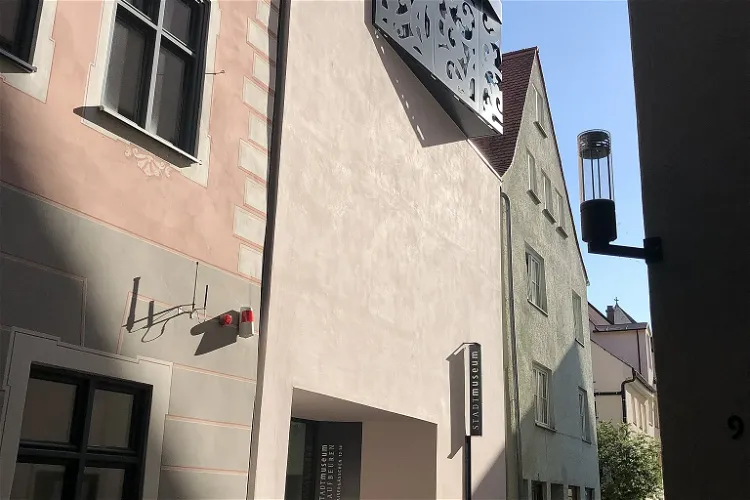
Stadtmuseum Kaufbeuren
KaufbeurenThe Stadtmuseum Kaufbeuren is a cultural history museum located in the city of Kaufbeuren. The museum focuses on the history of the city, presenting a permanent exhibition that illuminates the history of the Imperial City of Kaufbeuren with all its interconnections into economic and social history.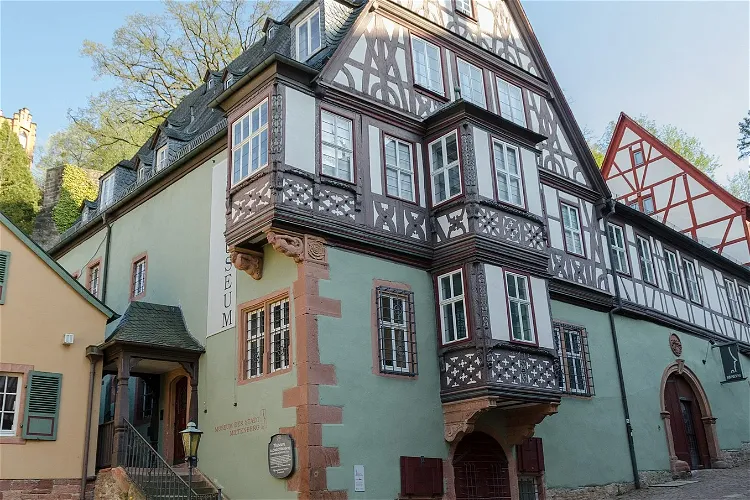
Miltenberg City Museum
MiltenbergThe Museum Stadt Miltenberg is housed in the 'Haus Miltenberg', a building characterized by its richly decorated Renaissance bay windows. This building is located at the Schnatterloch in Miltenberg, adding to the historical charm of the museum.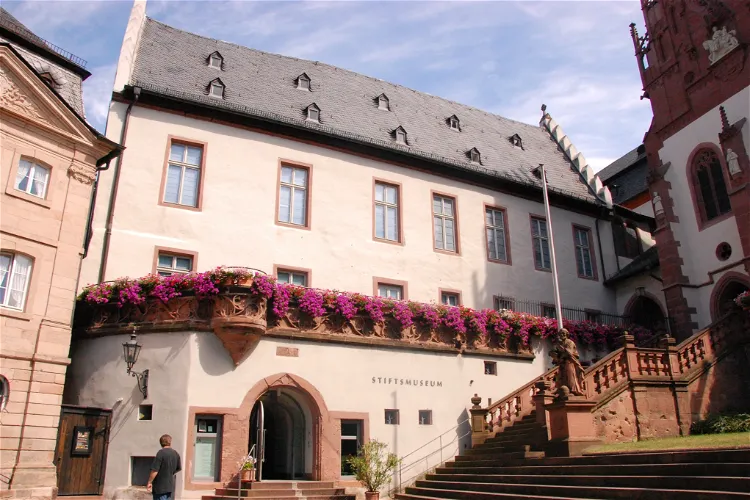
Stiftsmuseum
AschaffenburgThe Stiftsmuseum in Aschaffenburg is a city museum that offers a rich exploration of various historical periods. It is dedicated to prehistory, the art of the Middle Ages, the Renaissance, and the sacred art of the Baroque period. This wide range of exhibits provides a comprehensive overview of the artistic and cultural development of the region over centuries.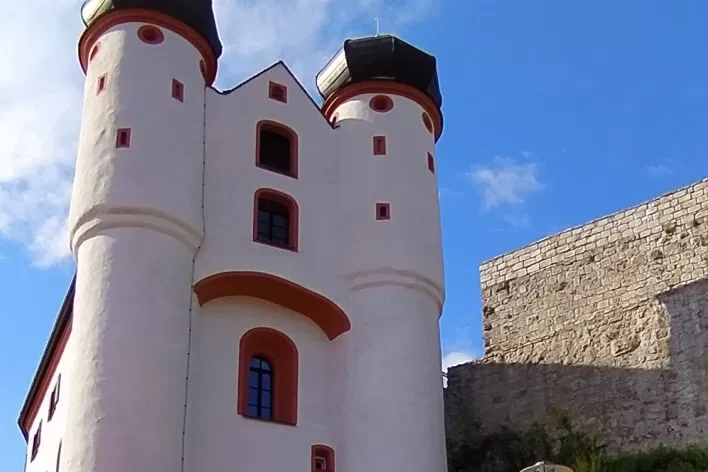
Burgmuseum Parsberg
ParsbergThe Parsberg Castle is a hilltop castle located on a limestone spur in the city center of Parsberg in the district of Neumarkt in Upper Palatinate, Bavaria. The complex has a long construction history that dates back to the 13th century. The castle museum, located in the lower castle, presents the h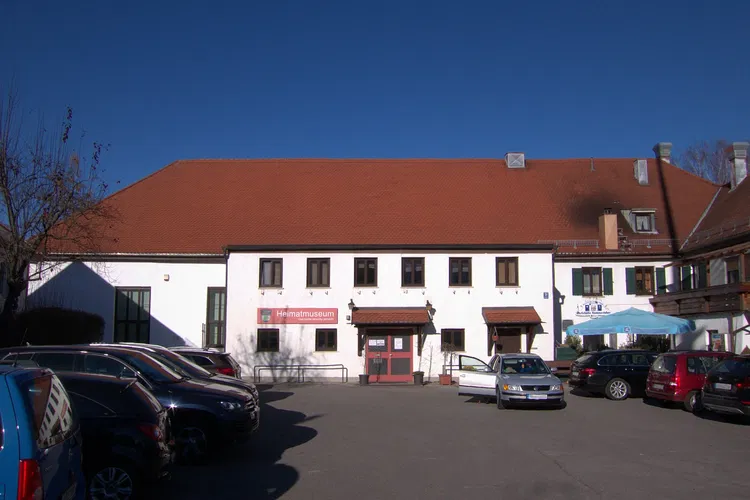
Heimatmuseum Unterhaching
UnterhachingThe Heimatmuseum Unterhaching is a museum located in the Upper Bavarian municipality of Unterhaching. It is dedicated to showcasing the evidence of human existence in the Unterhaching municipality area, a history that spans over 4500 years. This makes it a significant destination for those interested in history and archaeology.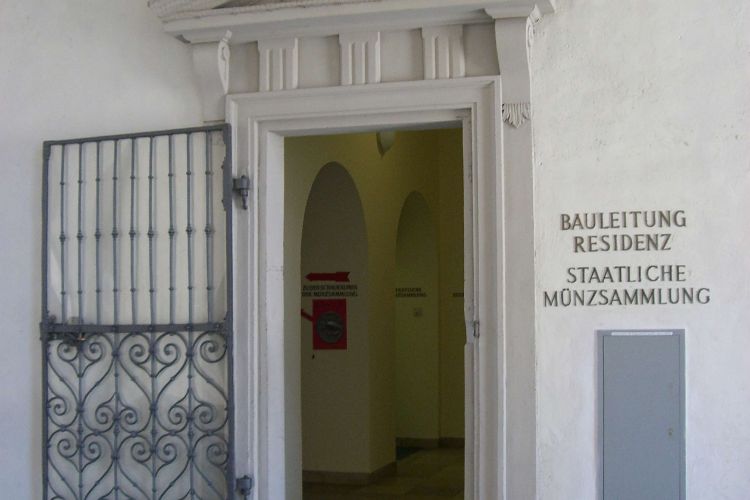
Staatliche Munzsammlung Munchen
MunichThe Staatliche Münzsammlung München is Bavaria's central numismatic collection. It is located in the Munich Residenz and houses over 300,000 coins, bank notes, money and medals from antiquity to the present day.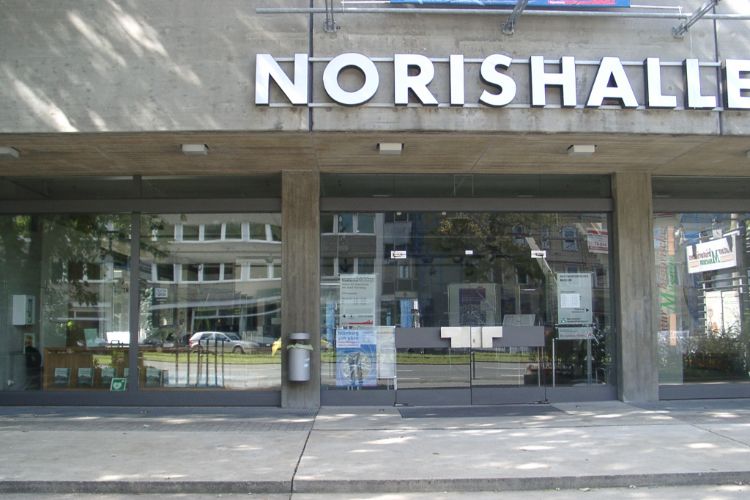
Natural History Museum
NurembergThe Natural History Museum in Nuremberg exhibits parts of the collections of the Natural History Society Nuremberg. The permanent exhibition in the Natural History Museum in Nuremberg covers the areas: ethnology, prehistory, archeology of Jordan, karst and speleology and geology. Zoology, entomology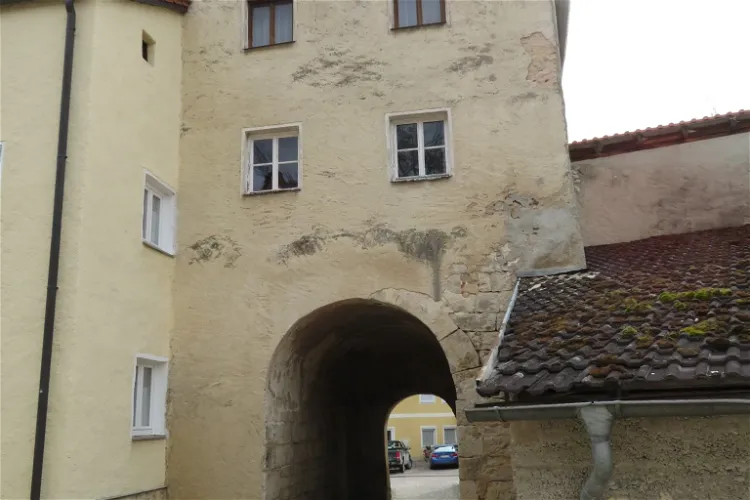
Altmühlzentrum
DollnsteinThe Altmühlzentrum is a museum situated within parts of the Dollnstein Castle and its adjoining open-air area. The museum is dedicated to the history of the location and the surrounding landscape, providing visitors with a comprehensive understanding of the region's past. The museum is accessible through the lower castle courtyard, which is enclosed by a ring wall, and entry is only possible through a medieval gate tower.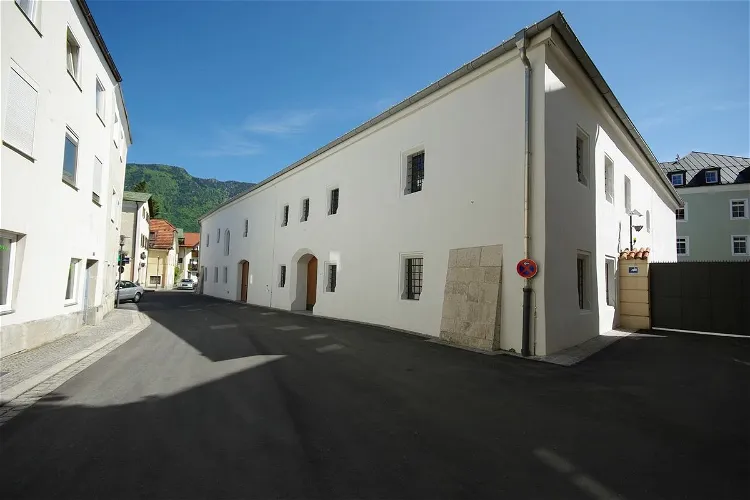
ReichenhallMuseum
Bad ReichenhallThe ReichenhallMuseum, previously known as the Städtisches Heimatmuseum Bad Reichenhall, is the local museum of the Upper Bavarian city of Bad Reichenhall. It is housed in the city's former grain store, located at Getreidegasse 4. The museum showcases numerous exhibits related to the history of salt mining, local crafts, city history, geology, and folklore.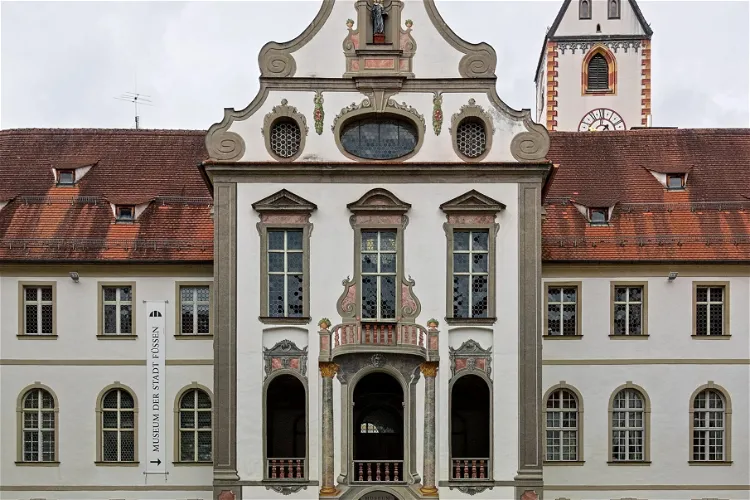
Füssen Heritage Museum
FüssenThe Füssen City Museum, located in a part of the former St. Mang Monastery, offers a rich insight into the city's history, the history of the monastery, and the tradition of lute and violin making in Füssen. Visitors can explore various exhibitions that shed light on these aspects, providing a comprehensive understanding of the city's cultural and historical background.
Stadtmuseum Nördlingen
NördlingenThe Stadtmuseum Nördlingen is a museum that provides a comprehensive insight into the history of the former Free Imperial City of Nördlingen. It is an ideal place for tourists who are interested in learning about the city's past and its significance in history.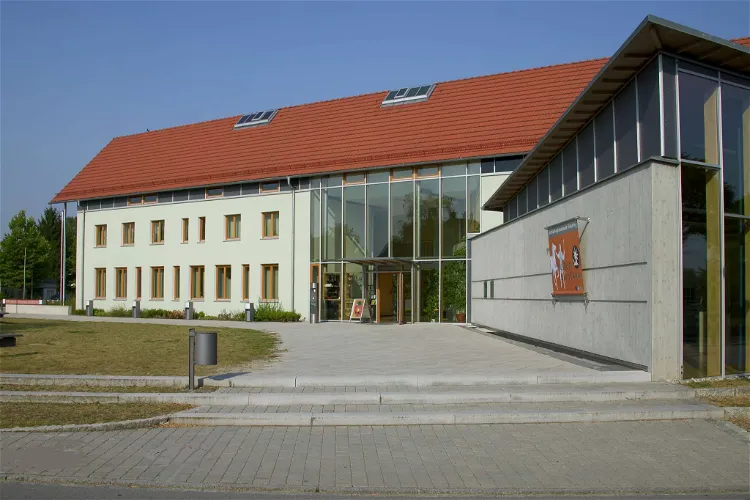
Museum Quintana
BruckThe Museum Quintana, also known as Museum Quintana - Archaeology in Künzing, is an archaeological museum located in the Lower Bavarian municipality of Künzing in the Deggendorf district. It is a partner museum of the Archaeological State Collection in Munich and a member of the Museum Network World Heritage Danube Limes Experience. The museum is supported by the municipality of Künzing and showcases archaeological finds from the Künzing municipality area.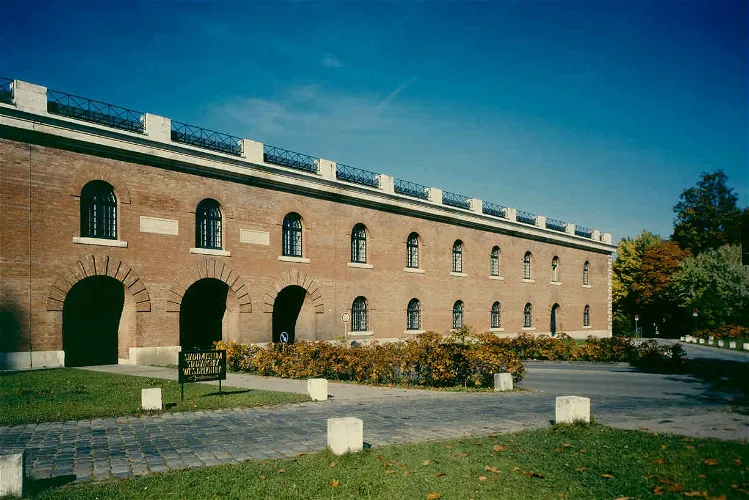
Stadtmuseum
IngolstadtThe Stadtmuseum Ingolstadt offers a comprehensive overview of the historical and cultural development of the Ingolstadt area, from prehistoric times to the present day. Visitors can gain a deep understanding of the region's past and its evolution over time.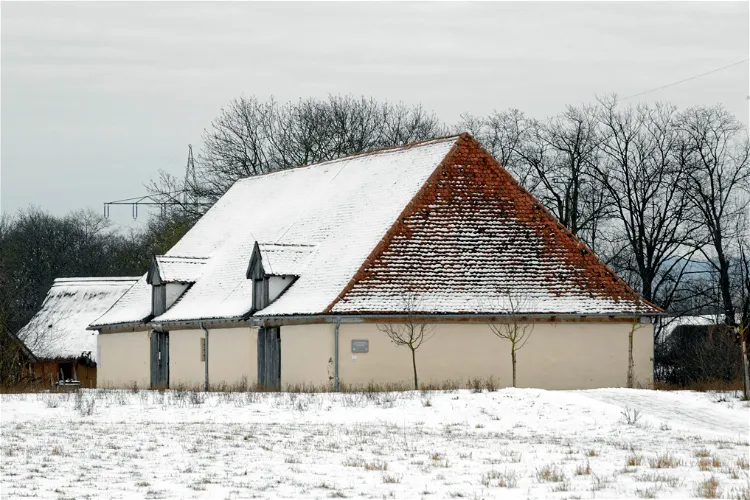
Archäologie-Museum im Fränkischen Freilandmuseum
Bad WindsheimThe Archaeology Museum in the Franconian Open Air Museum Bad Windsheim is a branch of the Archaeological State Collection Munich. It is located in a sheep barn from Virnsberg, which is part of the Middle Ages building group. This unique setting provides a historical backdrop for the museum's exhibits, enhancing the overall visitor experience.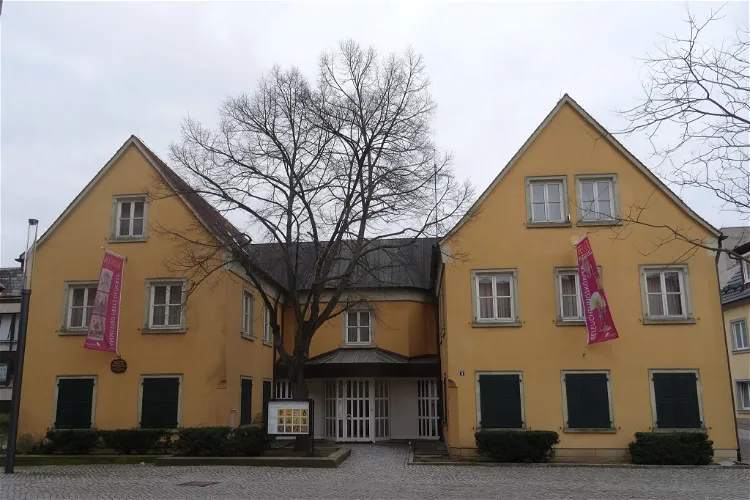
Museum Gunnar-Wester-Haus
SchweinfurtThe Gunnar-Wester-Haus in Schweinfurt is a museum that houses two distinct collections. The Graf Luxburg Collection features objects related to fire production and lighting, providing a historical perspective on these essential elements of human civilization. The Fritz Glöckle Icon Collection, on the other hand, showcases Russian icons from the 16th to 19th centuries, offering a glimpse into the sacred art of this period.
CHAMBER OF ART AND CURIOSITIES
LandshutThe Chamber of Art and Curiosities, also known as Kunst- und Wunderkammer Burg Trausnitz, is a branch of the Bavarian National Museum. It is situated in the Trausnitz Castle in Landshut, Lower Bavaria. This museum is a significant part of the Bavarian National Museum and offers a unique insight into the art and curiosities of the Renaissance period.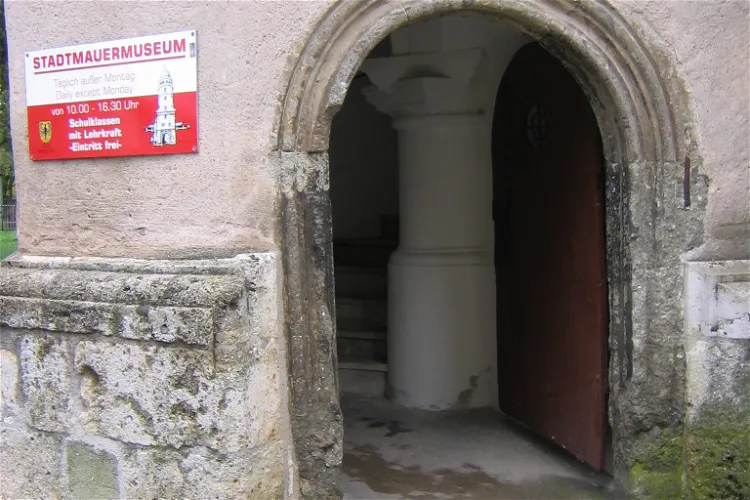
Stadtmauermuseum (Nördlingen)
NördlingenThe Stadtmauermuseum in Nördlingen is a museum dedicated to documenting the history of the Nördlingen city fortification. It provides a comprehensive overview of the city's defensive structures and their historical significance.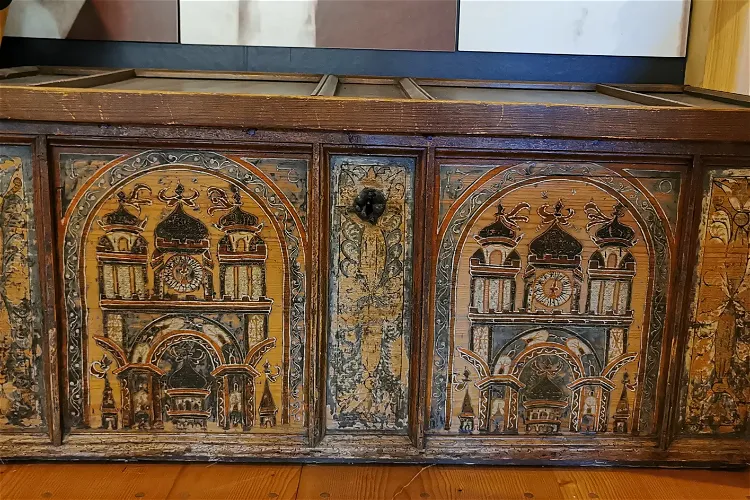
Prientalmuseum im Schloss Hohenaschau
Aschau im ChiemgauThe Priental Museum, situated in Hohenaschau Castle in Chiemgau, is a local history museum. It provides a unique opportunity for visitors to delve into the rich history of the region. The castle itself is a significant historical site, adding to the overall experience of the museum visit.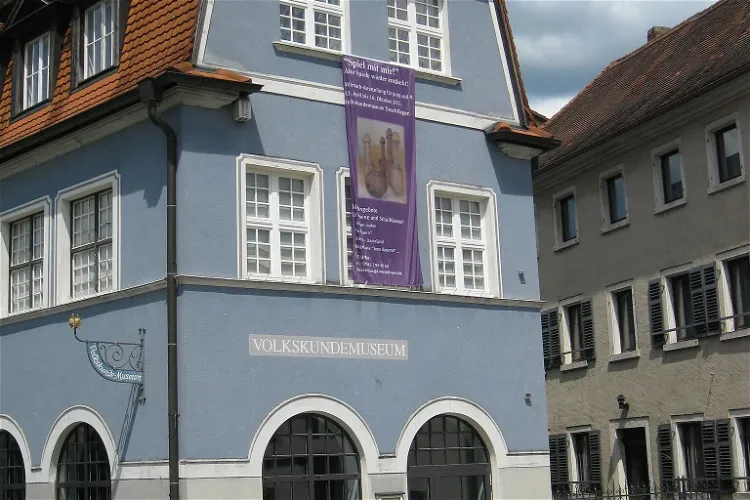
Museum Treuchtlingen
TreuchtlingenMuseum Treuchtlingen, situated in the Middle Franconian district of Weißenburg-Gunzenhausen, is recognized as one of the largest folk museums in Bavaria. The museum boasts a vast collection of more than 30,000 objects, offering a comprehensive insight into the region's cultural and historical heritage.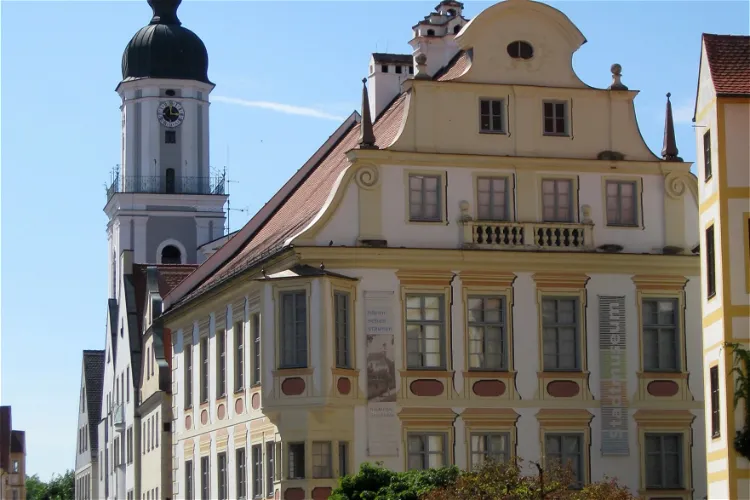
Stadtmuseum
Neuburg an der DonauSince 2005, the Weveldhaus has been home to the Neuburger Stadtmuseum, which is managed by the Historical Association of Neuburg. Located at Amalienstraße A 19, the museum offers a comprehensive insight into the city's history, making it a worthwhile destination for those interested in learning more about Neuburg an der Donau.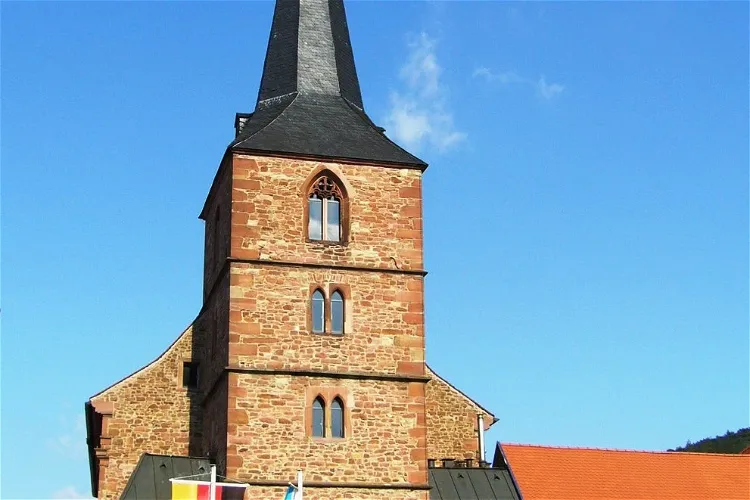
Shipping and Shipbuilding Museum Wörth am Main
Wörth am MainThe Shipping and Shipbuilding Museum Wörth am Main is a repository of the historical evolution of inland shipping and shipbuilding on the Main. The exhibits on display have a strong connection to the shipping town of Wörth am Main, providing visitors with a deep understanding of the town's maritime history.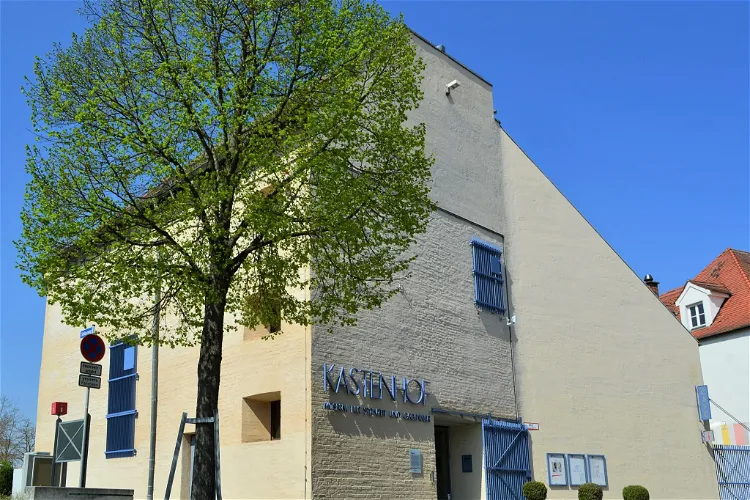
Kastenhof Landau - Das Museum für Steinzeit und Gegenwart
Landau an der IsarThe Kastenhof Landau - Das Museum für Steinzeit und Gegenwart is an archaeological museum located in the historic Kastenhof in Landau an der Isar. The museum focuses on the Neolithic period, shedding light on the cultural changes of this era and their impact on modern human life. The museum opened on October 27, 2019.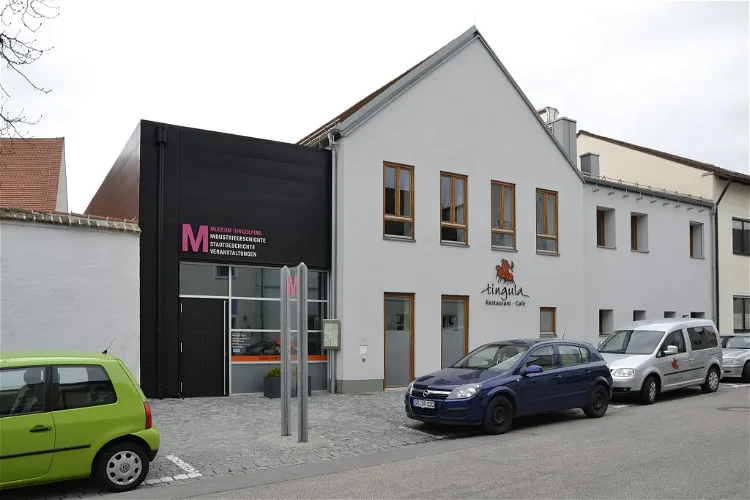
Museum Dingolfing
DingolfingThe Museum Dingolfing, located in the Herzogsburg Dingolfing, offers a diverse range of exhibits. These exhibits span from prehistoric times to the industrial era, and also include the history of the city of Dingolfing. This provides a comprehensive overview of the region's past, making it an informative destination for tourists interested in history and archaeology.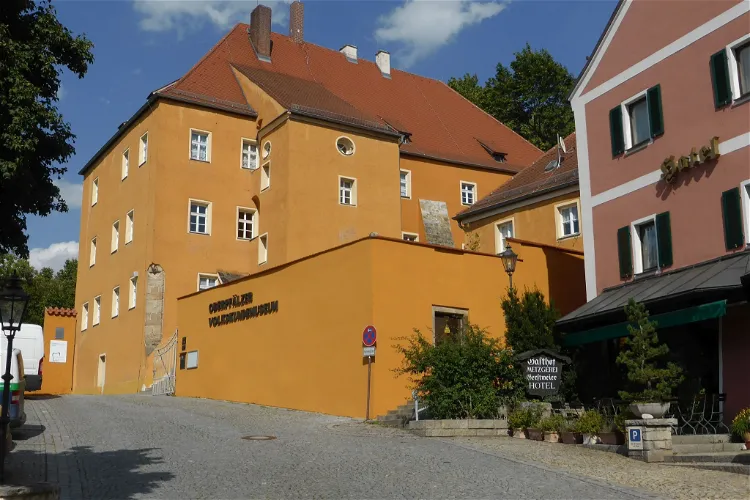
Oberpfälzer Volkskundemuseum
BurglengenfeldThe Oberpfälzer Volkskundemuseum is situated in the city of Burglengenfeld. It is housed in the monument-protected former Pfleghaus, also known as the "Große Kanzlei" of the castle of Burglengenfeld. This location adds a historical charm to the museum, making it an interesting destination for tourists who appreciate history and architecture.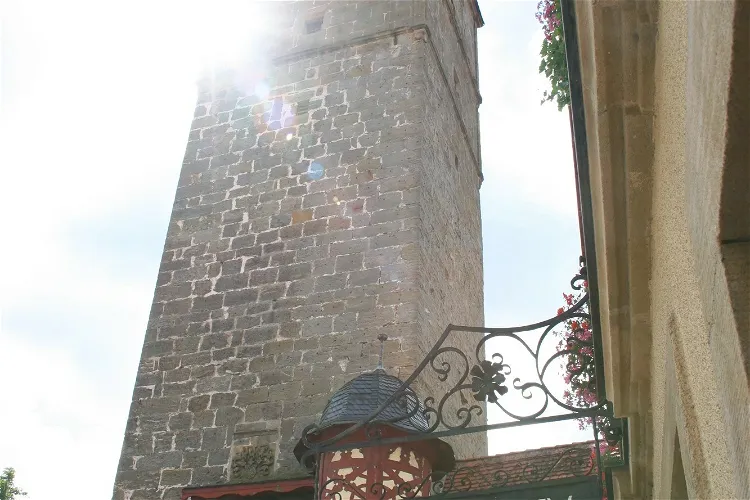
Heimatmuseum Ebern
EbernThe Heimatmuseum Ebern, situated at the Grauturm, is a local history museum in Ebern. It was established in 1965 by the Ebern Citizens' Association. The museum is housed in a former savings bank building provided by the city of Ebern, next to the 'Grauturm'.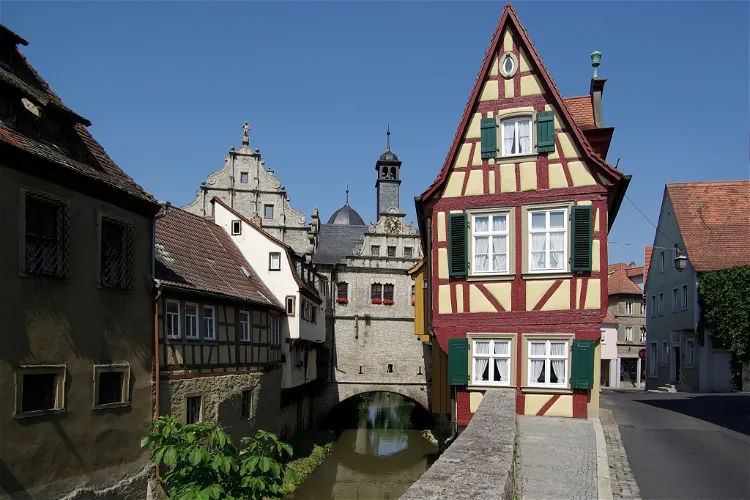
Museum Malerwinkelhaus
MarktbreitThe Museum Malerwinkelhaus Marktbreit is a city museum situated in the Malerwinkelhaus, a historic building in the old town of Marktbreit. This location adds to the charm and historical significance of the museum, making it an interesting destination for tourists interested in history and culture.- 69
Heimatmuseum Stadt- und Landkreis Neudek im Erzgebirge
AugsburgThe Heimatmuseum for the city and district of Neudek in Augsburg is a museum that focuses on the traditions and history of the Germans who were expelled from the now Czech city of Nejdek (German Neudek) after the Second World War. This museum provides a unique insight into the history and culture of this region and the people who once lived there. - 70
Archäologische Sammlung Weißenhorn
WeißenhornThe Archäologische Sammlung Weißenhorn, also known as the Archaeological Museum Weißenhorn, is an archaeological museum situated in the Swabian city of Weißenhorn, located in the Neu-Ulm district. This museum offers a unique opportunity to explore the rich archaeological history of the region. - 71
Fossilien- und Steindruckmuseum Gunzenhausen
GunzenhausenThe Fossil and Stone Print Museum Gunzenhausen, previously known as the Maxberg Museum or Museum on the Maxberg, is a paleontological and geological museum located in Gunzenhausen. This city is situated in the Middle Franconian district of Weißenburg-Gunzenhausen. The museum is a significant destination for those interested in paleontology and geology, offering a unique insight into these scientific fields.